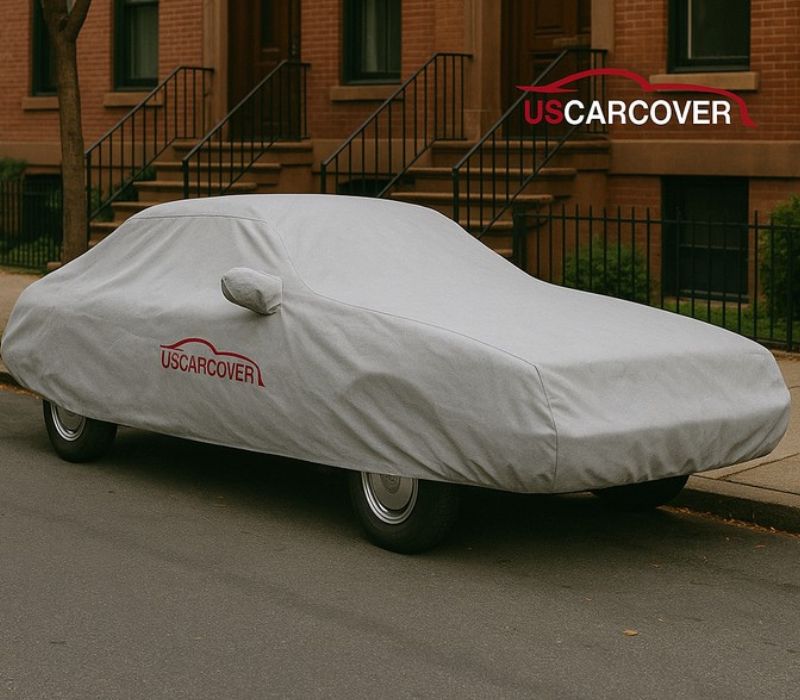
An American Motors car cover sounds most reassuring when the label says “100% waterproof.” The better question, though, isn’t “how sealed is it,” but “does the cover let the car breathe?” This article goes straight to real-world use: the value of AMC, models you still see today, why an “airy” spot isn’t always safe, the truth behind that waterproof label, a 3-minute at-home cover test, often-missed care tips, how to choose the right car cover, safe-use guidance, and quick fixes when you spot early warning signs.
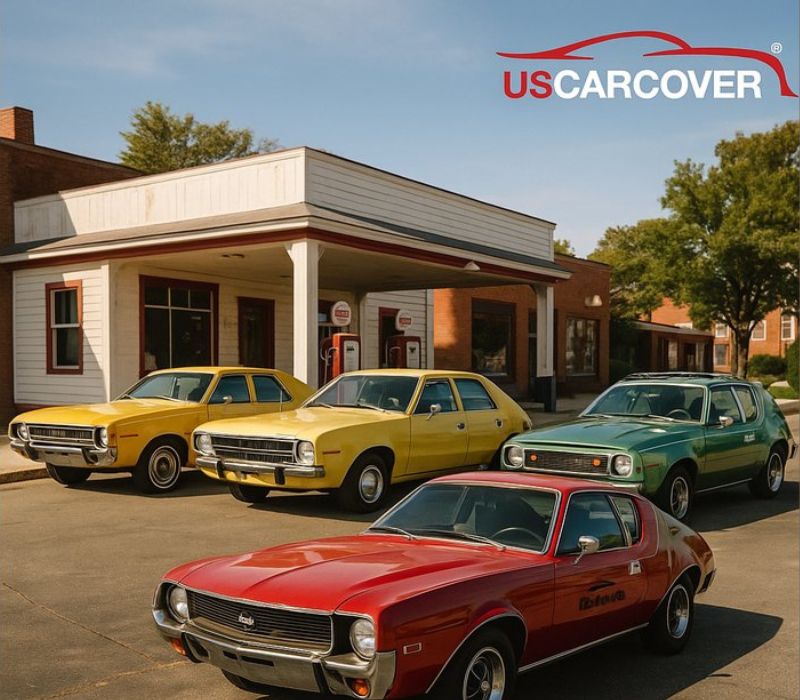
Related Articles: BMW Car Cover Why a car in the garage still deteriorates and how to stop it at the source
The Value of American Motors

Starting from the roots keeps you clear-headed when picking protection. American Motors (AMC) is a memorable part of 20th-century American car history, known for bold, characterful models that dared to be different. You still see these names at classic meets or even on weekend streets: Javelin, AMX, Gremlin, Pacer, Hornet, Matador, Eagle. What unites them isn’t spec sheets but presence: long fastback lines, distinctive cut tails, wide bodies with big glass, sporty wagons, and forward-thinking high-riding crossovers. When you cover an AMC, you’re covering a slice of American car culture. Covering it the right way means preserving that presence year after year.
AMC Models You Still See Today. Think about how the car is used weekly to know which cover you actually need:
- Javelin, AMX are weekend show stars. Owners cover and uncover often for events. The rear glass edge, steep fastback tail, and body creases scuff easily if a cover is baggy.
- Gremlin has a short, cut tail with sharp angles. In light wind, a one-size cover puffs and collapses on that cut edge, leaving a dull trace over time if the lining isn’t soft enough.
- Pacer is wide with lots of glass, sometimes with a roof rack. A pattern that’s off by a little can snag window trim or rub over the rack in a breeze.
- Hornet, Matador came as wagons and coupes. Their beautiful curves are also where heavy, sealed covers tend to “sand” the surface when side winds hit.
- Eagle is a high-riding all-rounder. Plastic fender trims and bumper edges are sensitive to thick, heavy covers—especially if they’re pulled tight and it’s windy.
Bottom line for AMC shapes: the “unusual” form is the beauty. That’s why a cover that’s tailored to fit, soft inside, and breathable outside is essentially non-negotiable.
Why the Car Needs Protection
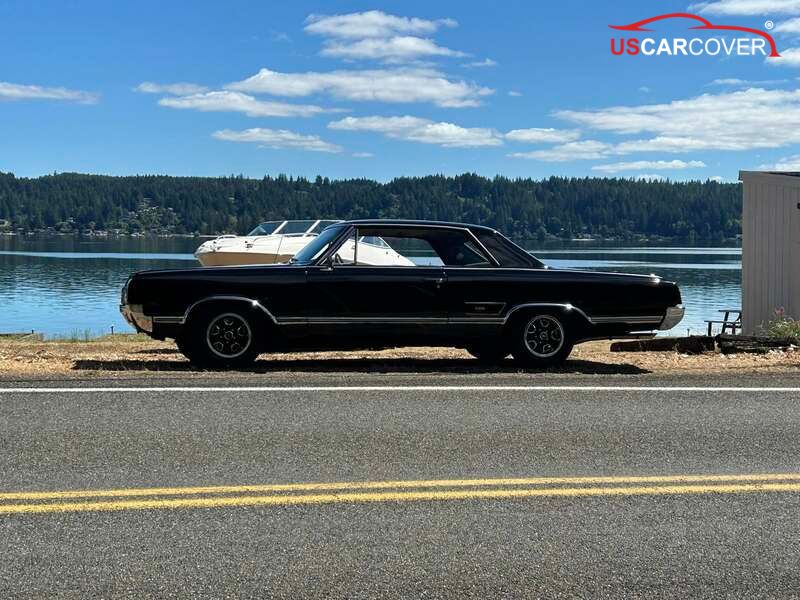
Most owners assume parking in a breezy spot is enough. In reality, what feels airy to us isn’t always safe for a car:
Porch parking with sprinklers and overnight dew. Mist at night, dew by morning; as it dries, tiny mineral rings appear on glass and bright trim. If the inner face of the cover runs stuffy, those rings can faintly print on paint under inspection lights.
Under trees. Sap and pollen fall with every breeze. A loose, oversized cover puffs and rubs along fastback edges or the cut tail, leaving a dull trace that follows the body line.
Three-sided carport. Slanting afternoon sun heats the same hood patch daily, and fine dust sticks to the cover. If you cover while the engine bay is still warm or the lining is dark and grabby, that hot spot can shift tone after a few weeks.
Short version: there’s rarely an instant scratch, but there is repeat wear. If you want the cover to truly protect, face the truth about “100% waterproof."
“100% Waterproof” Sounds Great… but Can Backfire
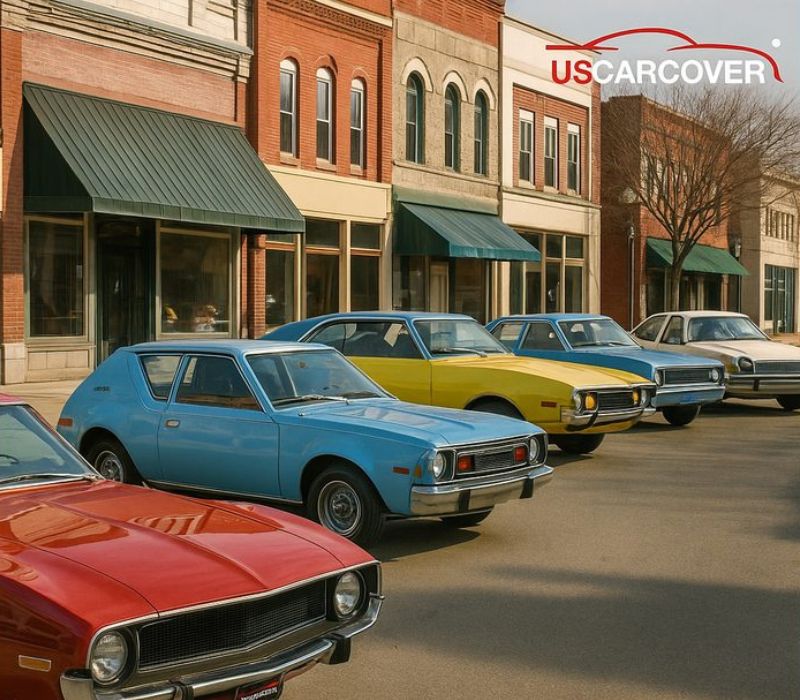
Feeling safe comes from the idea of being “sealed.” In practice, classics need to breathe. A cover that’s sealed like a raincoat blocks water from outside-but it also traps what comes from inside: leftover rinse water, lingering dew, warmth after a short drive, even sweat from your hands while pulling the cover. The longer dampness sits against the surface, the more likely you’ll get a musty smell, faint mineral prints, or subtle haze in the paint. On bright trim, tiny white specks are often the first sign you’ve been “slow-cooking” moisture against the car without realizing it. The right cover for a classic isn’t a water wall-it’s a moisture-venting filter. It pushes moisture out quickly, keeps grit off, and touches the surface with a soft, light-colored, low-lint lining.
A 3-Minute Test to Spot a Good Cover
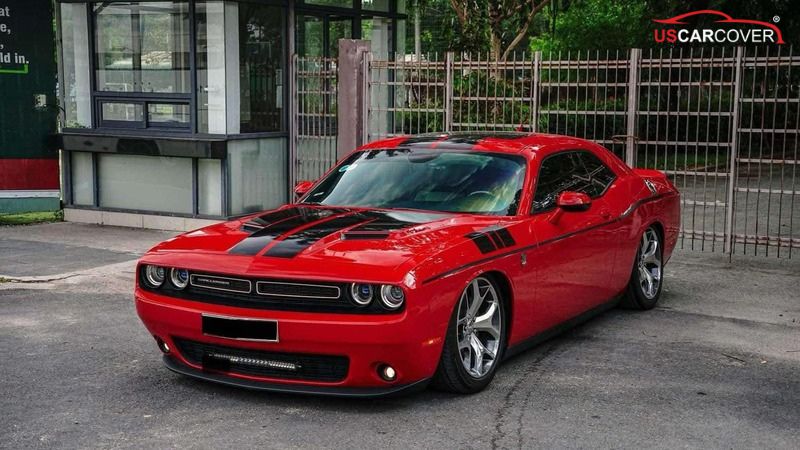
No instruments needed-just a few quick checks before any cover touches your AMC. Breath test. Hold a corner of the fabric to your mouth, exhale once, and watch. If it dries quickly, breathability is good; slow dry-down often means a heavy plastic coating. Color-transfer test. Rub a slightly damp white towel on the inner lining for 10–15 seconds. If the towel stays white, you’re safer; if it picks up color, rethink it. Light test. Shine a flashlight from the inside out and look for an even, gentle glow. Heavily coated fabrics often look dull and blotchy.
These don’t replace lab specs, but they’re enough to avoid bad choices from day one.
American Motors Car Cover: Important Notes Owners Often Miss
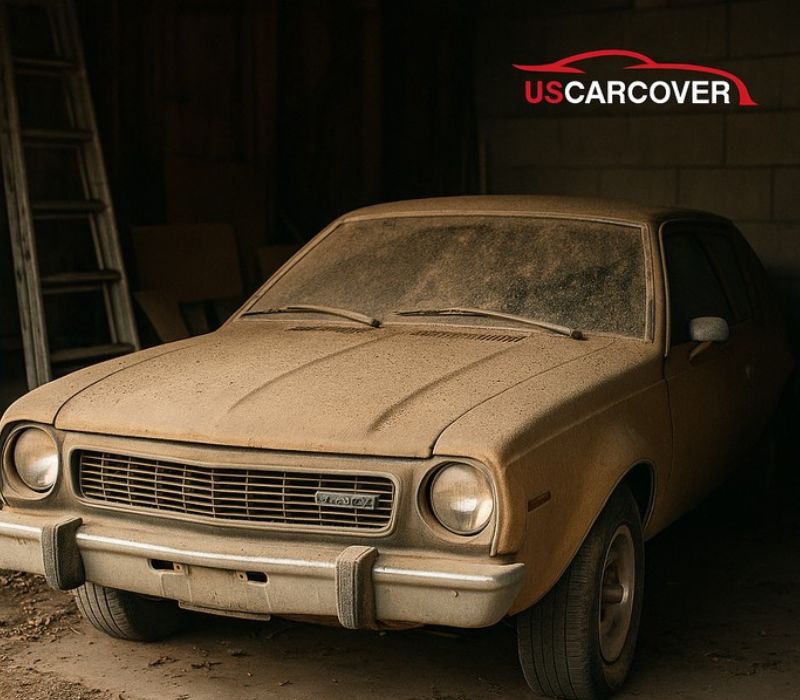
Small habits that are easy to do-and make a big difference over time:
Wash on schedule and dry completely. Semi-outdoor: every 3–4 weeks; indoors: every 6–8 weeks. Mild soap; air-dry fully before storage.
Check five sensitive spots monthly. Hood-ornament area, side-exhaust zone, side-mounted spare, top fasteners, and the fastback/boattail ridge. See something odd? Fix it while it’s minor.
Tie down with a gentle hand. Use soft tie-downs to stop flapping, but don’t yank the hem so hard it leaves a ridge. Light wind is when covers rub the most.
Avoid fall-down grime. Adjust sprinkler timing/direction; park away from heavy-sap trees; remove bird droppings early instead of scraping them dry.
Tailored fit to the body. Fastback Javelin, cut-tail Gremlin, big-glass Pacer, Hornet wagon or Matador coupe all have unique edges. One-size covers leave extra fabric that rubs those curves in the wind.
Soft, light lining; breathable outer. The lining should feel smooth and be light-colored with low lint. The outer should let moisture escape naturally. Classics should breathe, not be shrink-wrapped.
Only cover when the car is dry and cool. After washing, rain, or a short drive, wait until it’s fully dry. Covering damp or warm breeds odor and faint haze.
Buy for Where You Park, Not Out of Habit
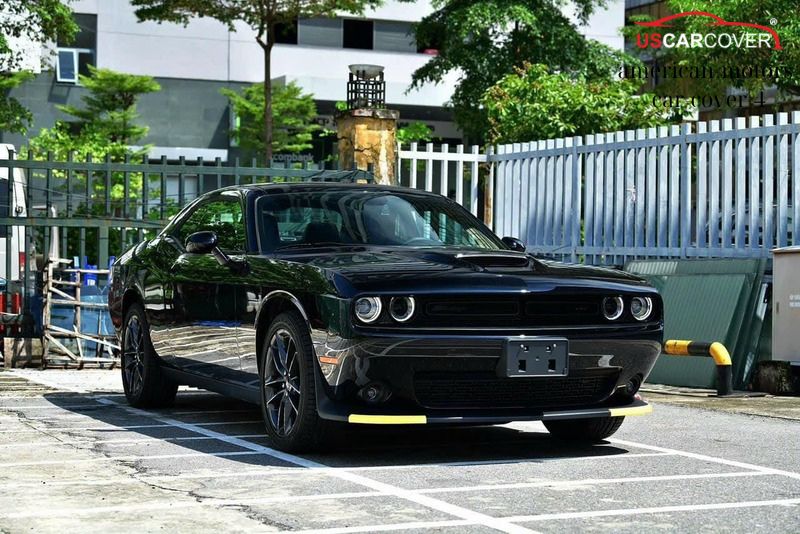
Same AMC, four different environments-four different cover needs. Porch with sprinklers and dew. Prioritize breathable, quick-drying fabric. Check water spots weekly and adjust watering schedules to avoid drift. Under trees. Choose an outer face that sheds dust so you can shake it clean; pick a very soft lining so cover on/off during pollen season doesn’t haze the finish. Wash more often when sap is falling. Carport with slanting sun and light wind. Go for breathable fabric with mild heat reflection. A tailored fit is a must; use soft tie-downs at the nose and tail to eliminate flapping. Coastal, humid air. Favor easy-wash, quick-dry materials. Before longer parking stretches, dry bright trim and apply a light wax to deter tiny white specks.
Simple, effective mindset: the environment decides the cover, not shopping habits.
Safe-Use Guidance You Can Do Solo
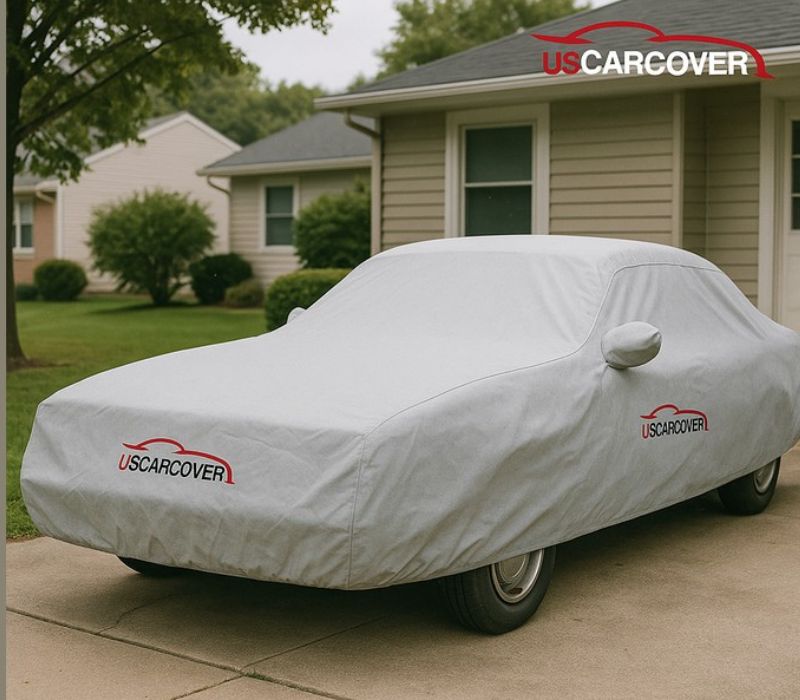
A good cover still needs the right touch to work well. A short, repeatable routine keeps it safe. Before covering. Blow off loose dust at the nose and glass; blot any damp spots. Clean hands, clean towel. To cover. Set the front edge at the hood ornament, pull along the roofline or tail spine so it self-aligns, adjust mirror pockets, hug the fastback or cut-tail neatly, and relax the elastic hem. If it’s breezy, add soft tie-downs. To uncover. Roll so the inner face rolls inward; hang the cover to air for a few minutes before storing it in a breathable bag. Cleaning cadence. Semi-outdoor: wash every 3–4 weeks; indoors: every 6–8 weeks. A clean, fully dry cover is the base of safe handling.
Early Warning Signs and Quick Fixes
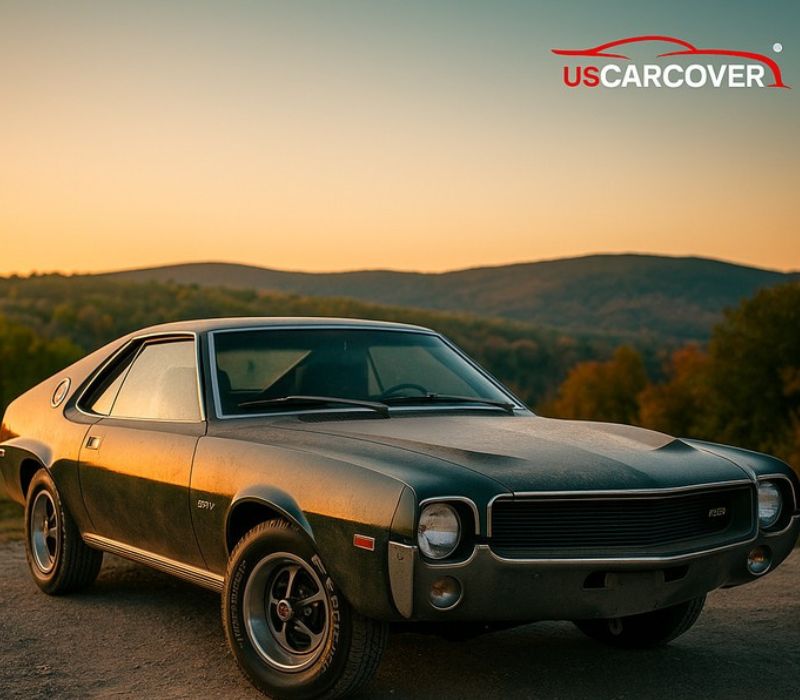
Most issues stay minor if you act early and gently.
Faint haze on paint. Pause covering for 2–3 days; keep the spot dry and out of slanting sun. Wipe very lightly with a microfiber towel. Going forward, only cover when fully dry and cool; favor a light, smooth lining.
Peppered bright trim. Clean with a mild solution and fresh towel, then keep it dry. Recheck sprinkler drift or sea mist if you’re coastal. A thin wax on bright trim helps before long parking stretches.
Musty fabric top. Air the car, replace the desiccant in your cover bag, and inspect cover seams so they’re not wicking moisture back. In extra-humid weeks, extend dry time before covering.
Rule of thumb: spot early, fix gently-don’t rush. Wait too long and costs go up while results go down. An AMC is more than transport; it’s personality, memory, and a story you want to keep intact. An American Motors car cover is worth it when it does two things right: lets the car breathe and touches softly. Choose a cover based on where the car truly lives, with a soft, light-colored inner lining, a breathable outer, and a tailored pattern for the distinctive shapes of Javelin, AMX, Gremlin, Pacer, Hornet, Matador, or Eagle. Add a 60-second on/off routine, and what you gain isn’t just deep shine and bright trim-it’s peace of mind. Each morning when you lift the cover, your AMC still holds its presence and is ready for the next little drive
